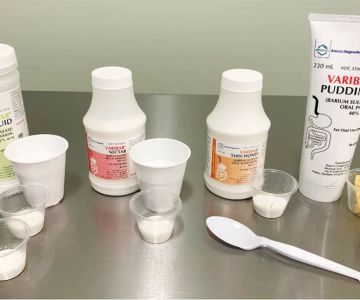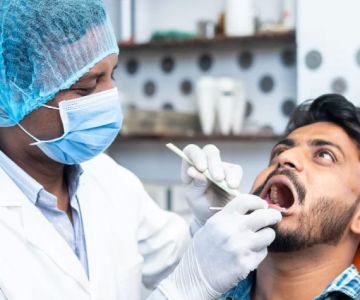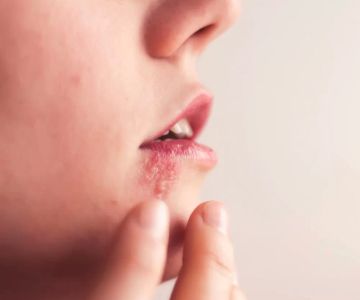Understanding Oral Fluid Drug Testing and Its Growing Importance
Oral fluid drug testing, commonly referred to as saliva drug testing, has become a popular method for detecting recent drug use in the United States. Unlike traditional urine or blood tests, oral fluid testing offers a less invasive, quicker, and easier way to collect samples. Employers, law enforcement agencies, and healthcare providers often rely on oral fluid tests because of their convenience and ability to detect recent drug intake.
Many people wonder, what drug do oral fluid drug tests check for? Understanding the range of substances these tests detect can help individuals prepare for testing scenarios and better grasp the science behind it. Oral fluid drug tests analyze saliva samples to identify the presence of specific drug metabolites, providing a snapshot of a person’s recent drug use—typically within the last 24 to 48 hours.
Common Drugs Detected by Oral Fluid Drug Tests
1. Marijuana (THC)
Delta-9-tetrahydrocannabinol (THC), the active compound in marijuana, is one of the most commonly tested substances in oral fluid tests. Because marijuana use is widespread, especially with increasing legalization in many U.S. states, detecting THC has become a critical component of drug screening. Oral fluid tests can detect THC soon after consumption, often within minutes, making it effective for identifying recent use.
2. Cocaine
Cocaine is a powerful stimulant and highly addictive drug. Oral fluid drug tests are highly sensitive to cocaine and its metabolites, providing a reliable method to detect use typically within 24 hours of ingestion. Given its potential legal and health consequences, detecting cocaine use quickly is a priority in workplace and criminal justice settings.
3. Amphetamines and Methamphetamines
These stimulant drugs, including prescription medications and illicit forms, are commonly screened in oral fluid tests. Amphetamines stimulate the central nervous system, and oral fluid tests can detect both medical and non-medical use. Methamphetamine, a more potent variant, is similarly tracked to identify illegal substance abuse.
4. Opiates and Opioids
Opiates such as morphine, codeine, and heroin, along with synthetic opioids like oxycodone and fentanyl, are critical substances screened in oral fluid tests. The opioid crisis in the U.S. has driven demand for reliable testing methods. Oral fluid drug tests are effective for identifying recent opioid use, helping monitor patients on pain management or detecting illicit opioid abuse.
5. Benzodiazepines
Often prescribed for anxiety and sleep disorders, benzodiazepines such as diazepam and alprazolam are included in oral fluid drug panels. Testing for these substances helps employers and medical professionals ensure compliance with prescriptions and detect potential misuse.
6. Phencyclidine (PCP)
Though less commonly encountered than other substances, PCP detection remains part of comprehensive oral fluid drug tests. Its hallucinogenic properties and serious health risks make it an important substance to identify promptly.
How Oral Fluid Drug Testing Works: The Science Behind the Swab
Oral fluid drug testing uses a simple swab device to collect saliva from the inside of the mouth. This sample is then analyzed for the presence of drug metabolites using immunoassay screening or more precise laboratory methods like gas chromatography-mass spectrometry (GC-MS).
The test’s detection window is relatively short compared to urine tests, usually covering drug use within the past one to two days. This short window makes oral fluid tests particularly useful for identifying recent drug consumption, rather than long-term use or historical exposure.
Because saliva collection is less invasive, it reduces the risk of adulteration or substitution, common concerns with urine tests. Additionally, oral fluid testing is convenient for on-site and roadside screening, contributing to its growing use by law enforcement and employers.
Real-World Use Cases: Stories That Highlight Oral Fluid Drug Testing
One illustrative case involved a transportation company that implemented oral fluid drug testing for its drivers to enhance road safety. A driver who tested positive for methamphetamine shortly after a shift was immediately removed from duty, preventing potential accidents and protecting public safety. The quick detection capability of oral fluid testing was praised by company management as a vital tool in their safety program.
In another example, a healthcare provider used oral fluid drug testing to monitor patients receiving controlled substances for chronic pain. The testing helped identify patients who were non-compliant with prescriptions, allowing for timely intervention and adjusted treatment plans.
These stories reflect the practical benefits and growing trust in oral fluid drug testing across various sectors in the U.S.
Limitations and Considerations in Oral Fluid Drug Testing
While oral fluid drug tests offer many advantages, they also have limitations. The shorter detection window means they are less effective for identifying long-term or past drug use. Some substances might be present in saliva at very low concentrations, potentially leading to false negatives if the test sensitivity is inadequate.
Environmental contamination and improper sample collection can affect results, so training and standardized procedures are crucial for accurate testing. Moreover, the presence of some prescribed medications may require careful interpretation by medical professionals to distinguish between legal use and abuse.
How to Prepare for an Oral Fluid Drug Test
Preparation primarily involves understanding what substances may be tested and the detection windows. Abstaining from drug use for several days prior to testing is recommended if possible. Being honest about any prescribed medications and providing documentation can help ensure proper evaluation.
For employers and testing agencies, choosing accredited laboratories and following federal and state regulations enhances reliability and legal defensibility of oral fluid drug testing.
Where to Find Reliable Oral Fluid Drug Testing Services
For individuals and organizations seeking trusted oral fluid drug testing in the U.S., Dentistry Toothtruth offers expert recommendations and services tailored to meet diverse needs. Whether for workplace screening, clinical monitoring, or legal purposes, choosing a reputable provider ensures accurate results and compliance with regulations.
Oral fluid drug testing is a modern, effective approach to identifying recent drug use. Understanding what drug do oral fluid drug tests check for and how these tests work empowers consumers, employers, and healthcare providers to make informed decisions that promote safety and well-being.







 Breakwater Dental4.0 (58 review)
Breakwater Dental4.0 (58 review) Exclusively Endodontics4.0 (104 review)
Exclusively Endodontics4.0 (104 review) UofL Dental Associates - Dental Faculty Practice2.0 (36 review)
UofL Dental Associates - Dental Faculty Practice2.0 (36 review) Catonfield Dental4.0 (561 review)
Catonfield Dental4.0 (561 review) EZ Dental5.0 (53 review)
EZ Dental5.0 (53 review) Valleywise Community Health Center - Avondale4.0 (343 review)
Valleywise Community Health Center - Avondale4.0 (343 review) The Importance of Oral Health Education During Pregnancy for a Healthy Pregnancy
The Importance of Oral Health Education During Pregnancy for a Healthy Pregnancy Best Tips for Brushing Your Teeth Properly for Healthy Gums: Essential Techniques for Oral Health
Best Tips for Brushing Your Teeth Properly for Healthy Gums: Essential Techniques for Oral Health Why Skipping Dental Checkups Can Lead to Bigger Oral Health Problems
Why Skipping Dental Checkups Can Lead to Bigger Oral Health Problems Advantages of Porcelain Dental Restorations
Advantages of Porcelain Dental Restorations How Can Diabetes Cause Tooth and Gum Problems? Preventing and Managing Oral Health Issues
How Can Diabetes Cause Tooth and Gum Problems? Preventing and Managing Oral Health Issues Healthy Habits for Promoting Good Oral Health and Hygiene: Tips for a Healthy Smile
Healthy Habits for Promoting Good Oral Health and Hygiene: Tips for a Healthy Smile